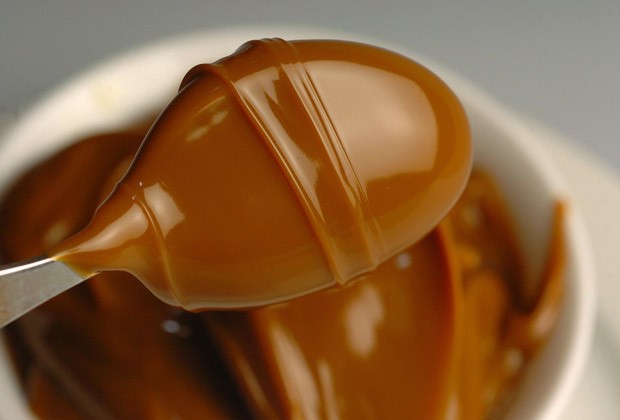Manjar 😋
a milk-based delicacy:
Manjar blanco (Spanish pronunciation: [maŋˈxaɾ ˈblaŋko]) , also known as manjar de leche or simply manjar, is a term used in Spanish-speaking area of the world in reference to a variety of milk-based delicacies. In Spain the term refers to blancmange, a European delicacy found in various parts of the continent as well as the United Kingdom. In The Americas (South America primarily) it refers to a sweet, white spread or pastry filling made with milk. This term is sometimes used interchangeably with dulce de leche or cajeta in Latin America but these terms generally refer to delicacies prepared differently from those just described. Related dishes exist by other names in other countries, such as tembleque in Puerto Rico. In Portuguese-speaking countries the dish is known as manjar branco.

Country Variations
-
Spain:
Manjar blanco in Spain and in other parts of Europe refers to a dessert (blancmange in English), traditionally light
brown in color (although often colored by added ingredients), made with a mould with a consistency like gelatin (in fact
modern varieties are often made with gelatin).
-
South Americas:
This term is used in Peru, Ecuador, Chile, and Argentina (not to be confused with natillas which is a similar but
separate dish). It refers to a set of similar dishes traditionally made by slowly and gently cooking pure milk to thicken
and reduce the volume, and gradually adding sugar. In some regions other ingredients such as vanilla, citrus juices, cinnamon,
and even rice may also be added. The result is a white or cream-colored thick spread. The cooking process is largely the
same as for creating sweetened condensed milk except that the result is normally thicker.
-
Central America:
In Guatemala, El Salvador, and other countries in Central America manjar de leche is a pudding or custard made with
milk, cornstarch (to thicken), sugar, and often other ingredients such as vanilla, cinnamon or other flavorings. This
white-colored confection may be eaten by itself or used as a pastry filling.
-
Colombia:
Manjar blanco is a traditional Christmas dish in Colombia, along with natilla. It is made out of ingredients like milk,
rice, and sugar, which are heated for a long period of time until the right texture is achieved. Manjar blanco is
usually eaten with a slice of natilla, buñuelos, and hojuelas, creating a flavor combination from the salty buñuelos
with the two sweet desserts.
-
Puerto Rico:
Manjar blanco in Puerto Rico is known as natilla and is classified as a cold custard dessert.
Natilla is made with cornstarch, vanilla, sugar, eggs, lemon zest, cinnamon, milk, and evaporated milk. A less sweet
version made with honey and more milk is enjoyed for breakfast in Puerto Rico, and served topped with fruit and
cinnamon.
-
Philippines:
A local adaptation of this dessert is called maja blanca, and uses coconut milk instead of milk. It also contains corn
kernels, and this variation is known as maja blanca con maiz.